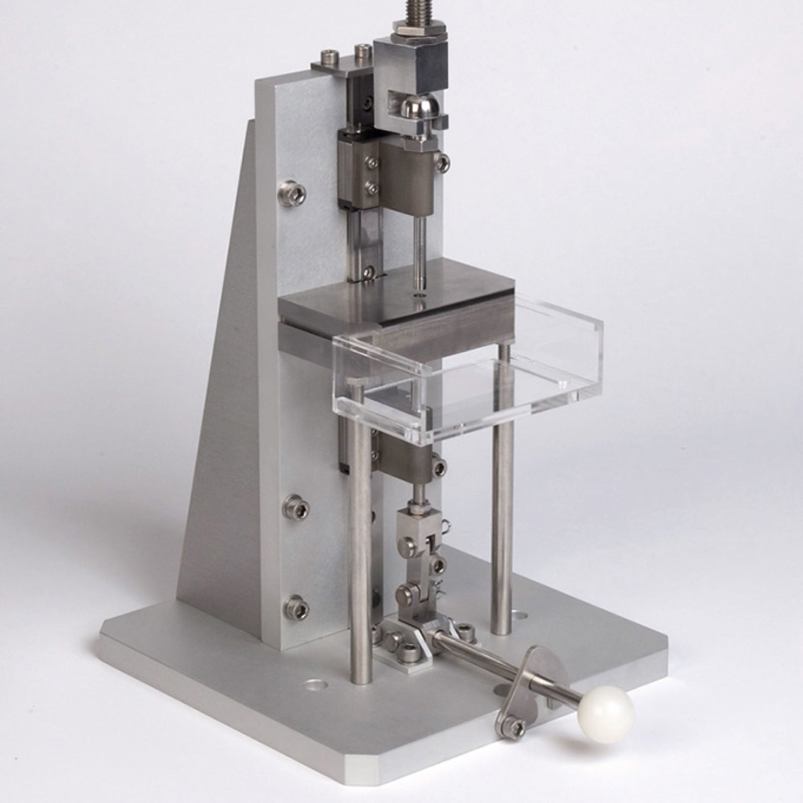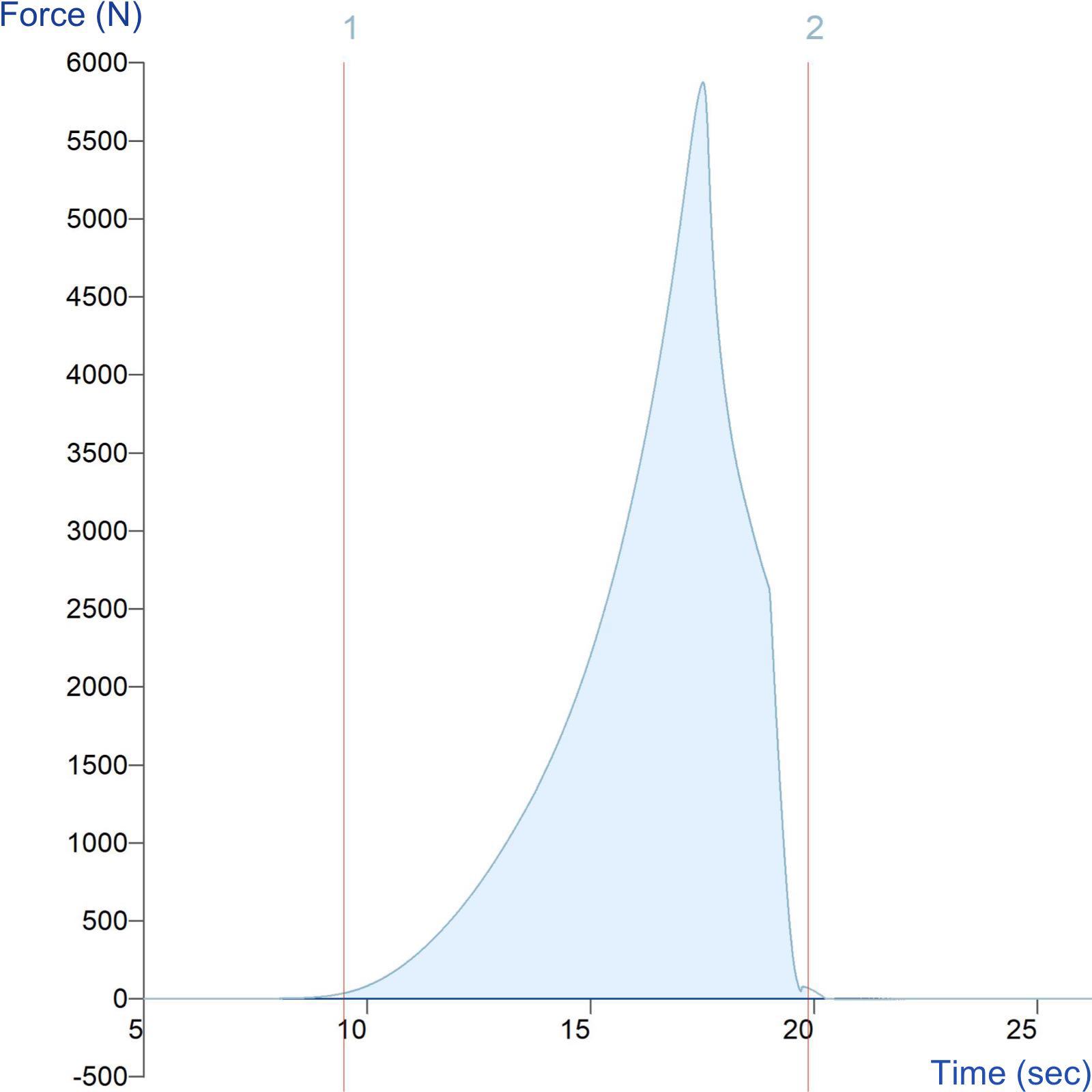Product overview
Tablet formulations are multicomponent systems. The ability of such a mixture to form a good compact is dictated by compressibility (ability to decrease in volume under pressure) and compactability characteristics of each component. The measurement of these alone and in combination should be obtained as part of any preformulation evaluation.
Pharmaceutical tablets come in a wide range of shapes and sizes. Investigating the effects of different shapes of tablet tooling on the properties of the tablets produced helps to determine why some formulations are difficult to produce in non-standard shapes.
A Texture Analyser can be used as a compaction simulator on ‘F’ tooling sets of different dimensions during which the compression properties of the powder can be measured. Using the punch attached to the Load Cell, the ejection force from the ‘F’ tooling die can also be evaluated. The resulting tablet can then be diametrally compressed to assess its fracture force.
The Powder Compaction Rig is available in two variants. The High Tolerance Powder Compaction Rig is suited to high force applications where the punch/die clearance is critical. As such this attachment is auto-aligned using a universal adapter. The Low Tolerance Powder Compaction Rig is suited to other powder compaction applications such as assessing granule friability, where the punch/die clearance is less critical.
Compaction properties of powders can be assessed using target force or target distance modes. Many powder compacts are formed to a target distance and so the Powder Compaction Rigs can be used to assess required force. New advances in tabletting machines allow compression to a target force resulting in powder compacts with constant porosity. The Powder Compaction Rig can be used with target force mode to assess the effect of fill level/weight on tablet thickness.
Ideal sample form
Powders/granules.
Benefits and limitations
- Requires high force capacity instrument
Technical information
Installation
Full installation instructions are provided within the Education Zone of the latest Exponent/Connect software version and on the technical information sheet accompanying this product.
Chemical compatibility
Stable Micro Systems probes and attachments are commonly made from four materials: anodised aluminium (AA6082 T6), stainless steel (316 T), Delrin (acetyl copolymer) and Perspex (polycarbonate).
In general use, probes and attachments made from these materials will be suitable for testing food products and inert non-food materials.
The four materials listed above are not universally resistant to all types of chemicals and as such the compatibility of the probe/attachment material with the product (to be tested) must be established to prevent damage to the probes and attachments. If the compatibility of the product with the probe is unknown to the customer then the chemical information about the product (Material Safety Data Sheet or Product Data Sheet) should be submitted to Stable Micro Systems. Stable Micro Systems will then assess the suitability of the probe/attachment material for use with the product and advise accordingly. If this advice is not sought then Stable Micro Systems will not accept liability for probes/attachments damaged by chemical attack from the product being tested.
Cleaning and maintenance
All probes and attachments may be cleaned in warm (or hand hot) water using a mild detergent. A soft brush may be used but abrasive cleaning aids should be avoided. Stable Micro Systems products should not be microwaved or cleaned in a dishwasher.
Screw threads should be lightly lubricated after drying using a light lubricant, e.g. petroleum jelly, mineral oil. This will aid the fitting and unscrewing of the item. Each component of a probe or attachment should be wrapped separately when stored, to avoid scratching or chipping. This will safeguard against any unnecessary damage to the accessory.



